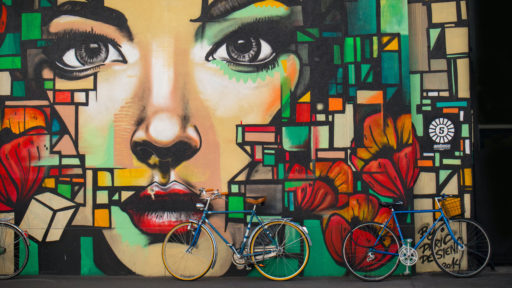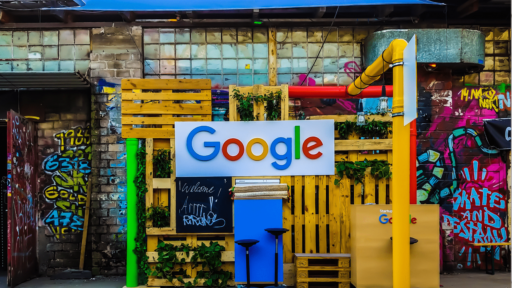It’s the golden ticket: ranking on page one of Google (sorry, Bing). We read guides, watch videos and listen to podcasts from those in the know but when it comes to SEO, we think it’s fair to say that most of us still don’t have a clue what’s going on. Heck, we’re not even sure the search engines themselves know!
In this blog, we’re going to be focusing on one of the most widely debated subjects of SEO – the role of social media signals as a search ranking factor. Do they directly impact SEO? How do backlinks come into things? Are eyebrows considered facial hair? These are the big questions.
Glossary of the main SEO terms
For those of you who aren’t experts in all things SEO, we’ve broken down a few of the most widely used terms below.
- SEO = Search Engine Optimization
- SERP = Search Engine Ranking Page
- Ranking factor or signal = These determine the position a URL holds on a SERP for a particular search term/keyword.
- Domain or page authority = The more ranking signals, the higher a site will appear on a SERP. When this happens consistently, the search engine sees that a site is providing high-quality, trustworthy content. This will determine the domain or page authority; which can decrease, as well as increase.
What are social signals?
Firstly, what are social signals? They essentially quantify the overall visibility of a social media page as perceived by search engines. This includes social channels such as Facebook, LinkedIn and YouTube but also includes community sites like Tumblr and Reddit. It’s all about how people interact with a brand’s content, largely focusing on human interaction metrics such as:
- Likes
- Shares
- Retweets
- Votes
- Reviews
- Views
When putting together a digital marketing campaign, these days, companies put a clear emphasis on their social media strategy. Social media is now a constant in many people’s lives and the marketing sector has quickly adapted to this. But when trying to formulate social media campaigns to directly impact SEO, there are several questions. Is it solely the number of likes and shares of a post that indicates ‘quality’ to Google? Does the number of followers of a page have any part to play? What about those micro-influencers with high engagement but a lower follower count?

Source: GIPHY
The history of social media vs Google
Up until the end of 2016, the most recognisable face of Google was the head of the webspam team, Matt Cutts. Due to his position and immense knowledge of the platform, he willingly became the ‘Google Search spokesperson’ for the company, translating changes to the tech community at large. If you already follow SEO to some degree, you should know that Google likes to change its mind…a lot.

Doesn’t he look happy? Source: YouTube
In 2010, Cutts admitted in one of Google’s Webmaster YouTube videos that although back in May they weren’t using social media platforms as a ranking signal, by the time December rolled around, they had changed their minds and were doing so. Confused yet?
He also stated that the reputation and authoritative status of an author or creator were being taken into account. It’s important to note that much like the evolution of backlinks within SEO, quality over quantity was stressed; so having a large follower count meant nothing if it was paid for or full of bots.
Fast forward to 2014 and Cutts notably stated that content on both social networks (Facebook and Twitter) were being treated just like any other web page. If something occurred on either platform and they were able to crawl it, the data would reflect in search results. In terms of ‘special, specific work’ to take into account follower numbers on Twitter or Facebook likes, to ‘the best of his knowledge’ there wasn’t anything relating to this within the algorithm.

Even Matt looks confused now… Source: YouTube
Clearly, the previously highlighted factor of a user’s vanity metrics for Google rankings had been scrapped. He praised the platforms for increasing engagement and visibility but warned users not to confuse ‘correlation’ with ‘causation’ when it came to social engagements vs SEO.
Following these videos, many users started to believe it was important to start ‘reading between the lines’. Some took from this new information that although it wasn’t necessarily followers and page likes that played a part, perhaps it was more so the shares themselves. A large number of shares could indicate the quality-level of the content. There was also talk that perhaps Google was trying to secretly (or not so secretly) favour their Google+ network. However, as this was shut down in early 2019, it’s no longer a relevant factor.

Source: YouTube
You’d think with the current banner on their channel that Google almost enjoys keeping the process as confusing as possible. Hey, don’t hate the player…right?
What are SEO ranking factors?
If you’re serious about improving your content marketing and thus your domain authority, you’ll have spent some time researching the ranking algorithm. Google is especially unforthcoming about theirs and we’re among the majority who have spent time streaming through endless lists, trying to work it out. Authors try and cover every which way but end up taking focus away from those factors that really matter.
According to SEO experts, Ahrefs, there are 10 that deserve your attention:
- Backlinks – the link building basis of PageRank
- Freshness – how recently a piece of content has been posted (query-dependent)
- Topical authority – how knowledgeable is the source?
- Search intent – do the results answer the keywords?
- Content depth – the most useful quality content, not necessarily the longest
- Page speed – keep that bounce rate low!
- HTTPS – encrypting data between browser and server
- Mobile-friendliness
- Optimised user experience
- Content accuracy
However, in 2021, Google is expected to roll out an algorithm update with one of the major elements focused on ‘Page Experience’. Essential, this will evaluate the experience of a user while they interact with a web page. Searchmetrics stated: ‘Google intends to measure this focus on users and their perception of the browsing experience using a combination of its Core Web Vitals, security aspects (safe browsing and HTTPS) and mobile-friendliness.’
This will include:
- Load Speed (‘Largest Contentful Paint’ factor from Core Web Vitals)
- Responsiveness (‘First Input Delay’ from Core Web Vitals)
- Visual Layout Stability (‘Cumulative Layout Shift’ from Core Web Vitals)
- Mobile-Friendly URL
- Safe and Clean Website Code (Safe Browsing with no Malware)
- Use of HTTPS Encryption
- No Intrusive Interstitials

Source: Google
Here’s the full blog post from Google if you’d like to take a more in-depth look.
Is social media a search engine ranking factor?
Putting it simply: no…but also yes. This is SEO, what did you expect?
According to Google, social signals are not a direct ranking factor for SEO. However, they do have a huge effect on the ranking factors they do consider.
It’s widely agreed that aside from the obvious high-quality, consistent content; one of the most important factors are backlinks. So, how do you go about having your content backlinked regularly by as many people as possible? Visibility.
SEO is confusing enough as it is, so to break up the mass of text and stats, we’ve put together a handy infographic for this section:

Source: Canva
Exposure (as always) is key when it comes to SEO, so your main tactics should always be boosting brand awareness. More brand awareness means more searches about/backlinks to your company which results in more brand awareness. This is one vicious cycle you definitely want to be involved in.

Source: Hootsuite
As of July 2020, more than half of the world’s total population is now on social media. If you’re looking for a platform to have your content shared as widely as possible, look no further. Social media sites were built for mass sharing. Initially, this was aimed at connecting friends and family but social media marketing has now become the most popular and effective branch of the sector.
How to optimise your social media campaigns for SEO
However directly or indirectly (depending on who you ask) there is a correlation between social signals and SEO. If you’re looking to get your brand name out there and start pulling in those backlinks, the journey begins by optimising your social media channels.
If you’re looking to optimise your social channels for SEO, here’s a quick summary of some of the dos and don’ts:
| Do | Don’t |
| Maintain consistency in your bios | Have varying profile pictures |
| Cross-promote your website & social profiles | Upload low-quality images |
| Be discoverable in search (keyword research) | Stick to the same old copywriting |
| Test all links before and after you post | Have an incomplete profile |
| Optimise images specifically for each channel | Allow any inappropriate photos or tags |
| Pin the best content to the top of your profiles | Forget to constantly review |
With SEO, the key, as ever, is strong content. You’re looking to inform and entertain your target audience but most importantly, provide value. Master this and you’re well on your way to a multitude of positive interactions.
Looking for some more actionable tips? We hear you.
- Post regularly: Keep your brand at the forefront of peoples’ minds and top of their feeds
- Variety: Ensure your brand awareness extends to all applicable social media networks
- Consistency: Use the same photo and handle (if possible) for each of your social media profiles so you’re easily accessible and recognisable
- Monitor and adjust: Take on-board all feedback and respond to any criticism in a positive, friendly way.
- Competitions: Nothing brings a burst of social shares and engagement quite like a competition.
- Partnerships: Get in touch with popular brands related to your industry and curate/create some original content together.
- Ensure your links aren’t nofollow: Nofollow links are links with a rel=”nofollow” HTML tag applied to them which tells search engines to ignore that link.
Predictions for social signals as a ranking factor
In a 2012 Moz report, they stated that they believed the impact of social signals would ‘eventually surpass links as the most valuable ranking factor’. This was down to a few reasons, many of which ring true today:
‘The world is becoming more social’
Social media has its peaks and troughs. As with all new technology, it quickly gained traction, connecting friends, family and businesses directly to customers. Then, came the rise of ads, cyberbullying and privacy invasions, which started pushing many users away. By the time global lockdowns came around in 2020, social media became an essential tool to stay in touch and connect with the outside world. Of course, Moz could never have predicted something like COVID-19 (although it wouldn’t surprise us) to spur the rapid growth of social profiles but boy, were they right.
‘People are more likely to trust a website recommended personally by their friends than by a search engine’
It’s no secret that the once dictator-like power of large corporations is well and truly at an end. Fewer people are trusting advertising these days, according to Edelman’s Trust Barometer; 3 in 4 consumers say that they avoid advertising altogether.

Source: Edelman
With the barrage coming from all angles (it’s estimated roughly 6,000 to 10,000 ads every single day), this doesn’t come as a surprise. Consumers would even rather trust people they don’t know over brands themselves, with 91% of millennials admitting to trusting online reviews as much as personal recommendations. Rather than looking for answers via Google Search, consumers are moving quickly towards community.
‘Websites with a strong social presence have better conversion rates and brand loyalty’
It’s not rocket science, coupled with the statistics; the greater a website’s social media presence, the more widely shared and accessible they will be. You’re browsing your favourite social sites and you suddenly see something you know your friend would love. In a matter of seconds, you’ve sent them the link in a direct message or tagged them in a comment. Nowadays, consumers expect to be able to find their favourite brands on all of the major social networks. From using Twitter as a customer service platform to viewing user-generated content on Instagram, they want accessibility.
The future of social signals and search engines
Matt Cutts said: ‘Because we’re sampling an imperfect web, we have to worry a lot about ‘identity’; when identity is already hard’. He made it clear that until they got to a stage where they were able to solve that impasse, they didn’t want to find themselves in a situation where they would be extracting data that could change without them knowing. He also predicted a time within the next ten years where the identity of a creator or author would be much more easily accessible and lead to a greater understanding of the social connections between people. Despite progressions, he made it clear that anonymity should still be a choice.
What we take from this is that when the technology is up to speed, Google will once again take into account a social media user’s vanity metrics. This would make sense, considering that this is pretty much the social media equivalent of domain and page authority; elements that already directly affect SEO.
To be able to use social media as a ranking signal, there are several important factors they will have to overcome first:
- The high, constant volume of content
- Short-lived relevancy
- Context ‘Mapping the relationship between social media users and their content would be key to understanding its value’
- Fake vanity metrics
- Social media accounts for rent (paid engagement and endorsements)
- The rise of any new social media networks
As Google crawls the web, it samples data at finite periods. Due to the sheer volume of content on social media and the speed at which things change, will they ever be able to formulate a balanced algorithm?
Conclusion
At least for the time being, we have to deal with the web as it is. The more Google irons out the issues they run into, the more likely they are to prominently feature social sharing as a ranking signal. It’s too important and integrated into the everyday life of billions of people to miss out. When that time comes, you can bet that they’ll be looking at the older, more established accounts as authoritative figures. So, what are you waiting for?

Source: GIPHY





